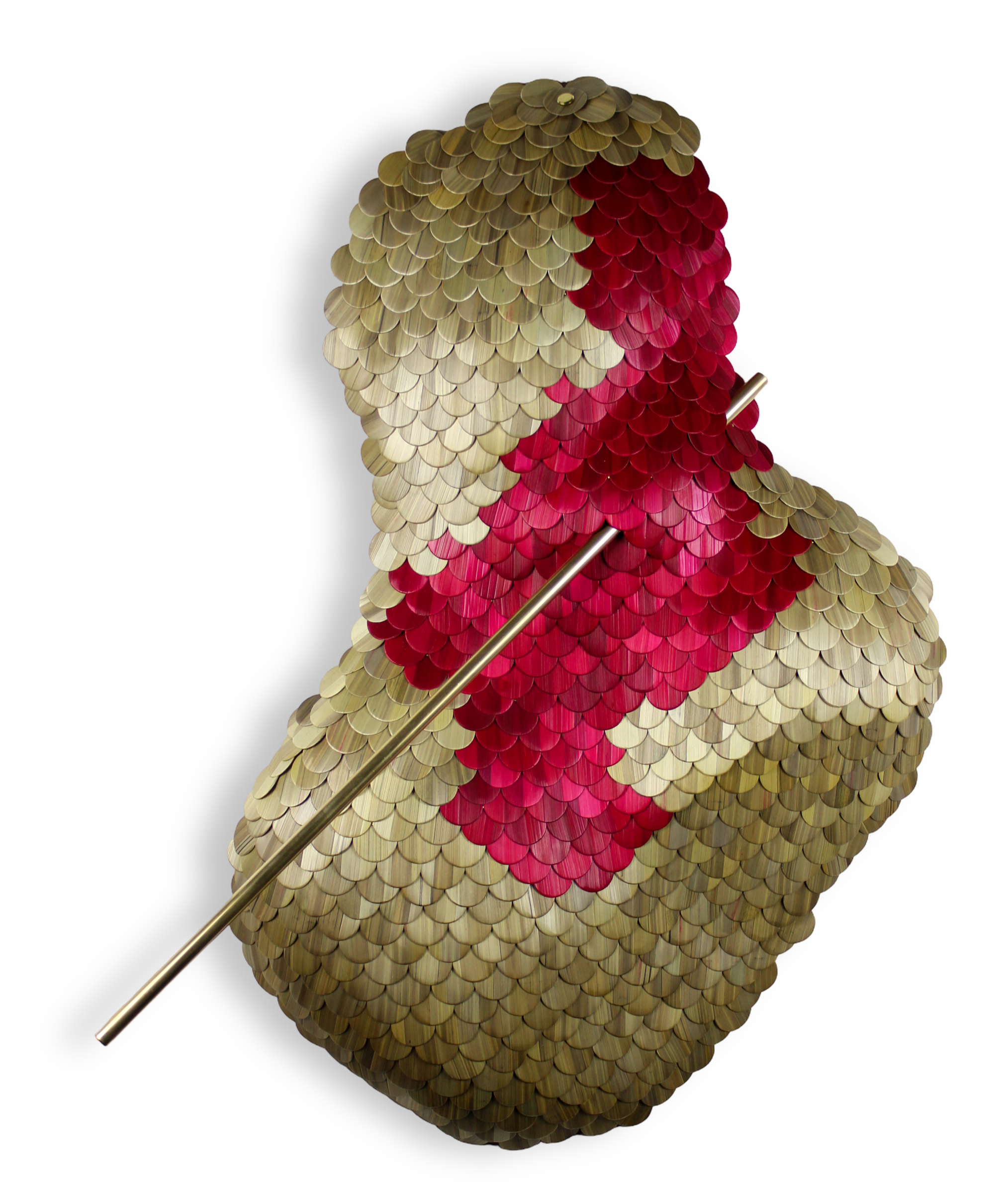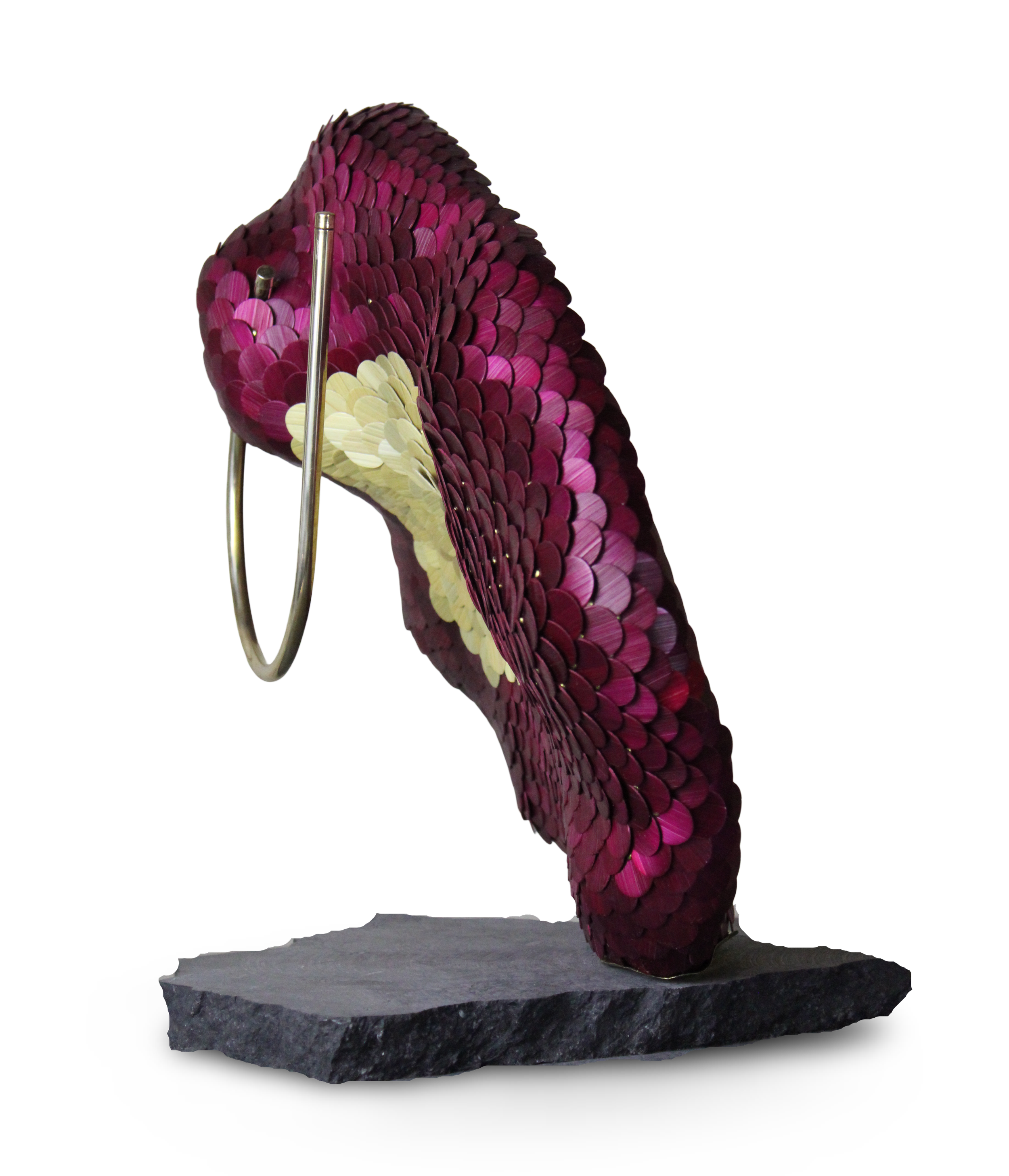Collection Statement
Where Giants Emerge and
Stories Unfold
Amoebas Realm
Amoebas Realm envisions a mythological future where the invisible becomes monumental, where microorganisms long hidden from sight evolve into giants that redefine the balance of life. These colossal amoebas, both parasitic and essential, mirror the dualities of our own time: creation and destruction, fragility and resilience, danger and renewal.
Context
The collection is inspired by both science and myth. While some amoebas are feared as destructive parasites, research reveals their vital ecological role in regulating bacteria and recycling minerals that sustain life. This paradox (threat and sustainer) anchors the work. Through sculpture, I reimagine these organisms as the architects of a transformed environment, reflecting our own struggles with ecological imbalance, pandemics, and crises of health and society.
Inspiration & Interpretation
Each sculpture is built around a carved wooden core, enveloped in individually nailed rye straw scales. The straw itself, rich in silica, mirrors the protective shells formed by certain amoebas for survival. Piercing the forms, golden rods interrupt their growth, referencing both a fictional discovery in the narrative and the ritual staffs of onmyoji priests used to seal away spirits. This interplay of science and spirituality, biology and myth, gives the works a layered symbolic resonance.
Technique & symbolic
Narrative
Crucially, every piece is tied to a character (an ordinary person of this imagined future) whose daily life intersects with the giants. Through these encounters, the works reveal how civilizations adapt, collapse, and reemerge in cycles, echoing the stages of our own history. These intimate perspectives bring humanity into the myth, showing how the monumental is always experienced through the ordinary.
In the end, Amoebas Realm is not only about giants and unseen forces but also about the fragile, enduring lives lived within them. It stands as both a cautionary tale and a myth of resilience: a meditation on the fragility of civilizations, the endurance of stories, and the hope that by recognizing what is unseen, we may live with greater awareness in the worlds to come.
Intention behind it
Alternative statement for more reading…
Explore a world where civilizations are redefined, and unseen forces shape the future.
A new emergence took place. In a distant future, an unforeseen event occurred: a species of microorganisms, known to us today as amoebas, evolved into something unimaginable; a giant species that, over time, insidiously took control of the planet's ecosystem.
In this mythological world, you’ll navigate through a reality entirely different from our own, where the invisible forces of today have become visible. Through various temporalities and the perspectives of different characters, you will encounter artworks and narratives that unravel the mysteries of this world and its challenges. These stories act as a mise en abyme of the struggles we face in our time, such as ecological imbalance, pandemics, mental health crises, and much more.
Scientific Foundations and Mythology behind the Realm.
Amoebas, microorganisms that have existed for millennia, are often viewed as dangerous parasites, particularly Naegleria fowleri, known as the "brain-eating" amoeba. However, research by soil biologist Edward A.D. Mitchell reveals that only about 15% of known amoebas possess symbiotic properties. The majority play vital roles in maintaining our ecosystem by regulating bacterial populations and enriching the soil through the recycling of minerals, promoting the release of nitrogen and other essential elements that support the development of life.
Drawing from this scientific understanding, Amoebas Realm explores a fictional narrative where the invisible world of microorganisms becomes the foundation for a reimagined environment. Through this lens, I highlight the often-overlooked significance of these organisms, while also delving into how humanity might adapt to a transformed world shaped by these powerful, unseen forces.
Each piece is built around a hand-carved wooden core, meticulously covered with rye straw scales. Each scale is individually nailed to create an intricate, lifelike pattern that mimics natural organization. But why use rye straw?
In the narrative of Amoebas Realm, these giant amoebas are a hybrid of two species: Naegleria Fowleri (the infamous "brain-eating amoeba") and Euglypha Rotunda, which uses silica from the soil to build a protective shell against predators. Similarly, rye straw absorbs silica from the soil to form a shiny, protective outer layer, which helps prevent the plant from rotting in humid environments. This parallel between the amoebas and the straw offers a perfect connection between two vastly different entities that use a similar mechanism for survival.
As for the gold-colored rods piercing the subjects, they represent a pivotal discovery in the narrative—a material that halts the amoebas' development. These rods reference the ritual walking sticks used by onmyoji priests in ancient Asian cultures to seal demons and evil spirits. This symbolic connection ties the spiritual realm to the scientific, bridging the gap between myth and reality in the world of Amoebas Realm.
The Process and symbolic : Crafting the Realm
Amoebas Realm serves as a reflection on the delicate balance between creation and destruction, mirroring the challenges we face today. In a world driven by conflicts, consumption and environmental degradation, these pieces call us to reconsider our relationship with nature and the unseen forces shaping our lives.
As we move into the future, Amoebas Realm offers a message of both caution and hope: by understanding and respecting our world, we can shape a more sustainable and mindful existence.



